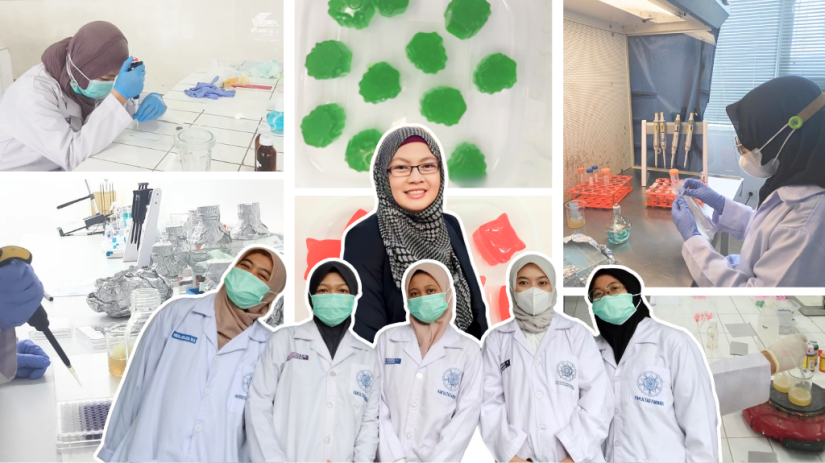
The 2018 National Basic Health Research results show that 92.6% of children aged 5-9 experience dental caries problems due to high consumption of sweet foods among children.
To support the government’s target of a caries-free Indonesia by 2030, a team of UGM students developed a new formulation for anti-caries candy based on nanotechnology using tempayang fruit extract (Sterculia lychnophora) and nanokitosan.
The UGM team consists of Salsabila Desti Winarno (Pharmacy 2022), Nabila Fahrida Rahma (Pharmacy 2022), Meilafaisa Wilis Alfidia (Chemistry 2022), Almadhitya Salsabila (Dentistry 2022), and Ade Zulfa Imania (Pharmacy 2022).
The research was conducted over three months, from May to July 2024, under the guidance of UGM Pharmacy lecturer Dr. Marlyn Dian Laksitorini.
Almadhitya Salsabila mentioned that the idea of using tempayang fruit in this research is based on observations of the people in Pemalang who use it as traditional medicine.
Even in literature, it is known that tempayang fruit extract has the potential to inhibit the growth of Streptococcus mutans bacteria and the formation of biofilm on teeth.
The research team utilized tempayang fruit and nanokitosan as additional ingredients in the anti-caries candy formulation. Chitosan nanoparticles have been proven effective in enhancing antibacterial activity against Streptococcus mutans.
“Another advantage of chitosan nanoparticles is that they are biodegradable, biocompatible, and do not affect the aesthetics of teeth,” said Salsabila.
As is known, Streptococcus mutans bacteria convert sucrose into glucan using the enzyme glucosyltransferase, forming biofilm and producing acid. This process lowers the pH around the teeth, causing enamel and dentin demineralization.
Another team member, Nabila Rahma, explained, “Therefore, we used xylitol and sorbitol as substitutes for sucrose.”
Rahma explained that using xylitol and sorbitol, which have high hydration properties, also helps maintain the chewy texture of gummy candy. This makes the candy easy to chew and gives it a good consistency.
“Additionally, xylitol can inhibit the growth of Streptococcus mutans, reduce acid production that damages tooth enamel, and increase saliva production to neutralize plaque acidity,” she elaborated.
Rahma hopes this research can serve as a foundation for further development in dental health for children in Indonesia.
Additionally, the research results can be applied in community service by creating modules or videos to enhance understanding and utilization of the product, which could also be a business opportunity.
She concluded, “We hope this product helps maintain children’s oral and dental health and contributes to achieving the Sustainable Development Goals for improving health and well-being.”
Author: Triya Andriyani
Editor: Gusti Grehenson

